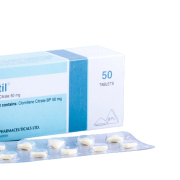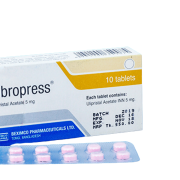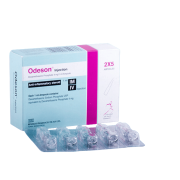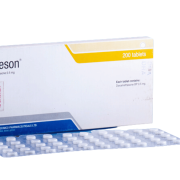Dinogest
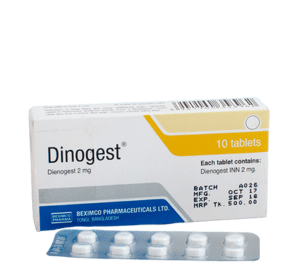
Generic Name: Dienogest
Dosage Form: Tablet
TG Name: Hormones & Steroid
1. What Dinogest® is and what it is used for?
Dinogest® is the preparation of dienogest which belongs to the class of medications called progestins, medications that act like progesterones in the body. Progestins reduce the effects of estrogen on tissues such as the endometrium (lining of the uterus) and the breast. By reducing the growth effect of estrogen on the endometrium, dienogest helps to reduce the pelvic pain experienced by women with endometriosis. Endometriosis is a condition where endometrium-like tissue is found outside the uterus, which causes chronic inflammation.
Dinogest® is used for the treatment of Endometriosis.
2. How to take this medicine?
The recommended dose of dienogest is 2 mg taken by mouth once daily. This medication should be taken at the same time every day, if possible.
Take the medication continuously (every day) even if you are on your period. Once you have completed a pack of tablets, begin the new package on the next day. Dienogest is not intended to be used as birth control. Do not take a break from the medication.
Take dienogest with some liquid as needed. Dienogest may be taken with food or without food.
It is important that this medication be taken exactly as prescribed by your doctor.
If one miss a dose or vomit or have diarrhea within 3 to 4 hours of taking a tablet, take a dose as soon as possible and continue with your regular schedule. If it is almost time for your next dose, skip the missed dose and continue with your regular dosing schedule. Do not take a double dose to make up for a missed one. If you are not sure what to do after missing a dose, contact your doctor for advice.
3. Who should NOT take this medication?
Do not take dienogest if you:
- are allergic to dienogest or any ingredients of the medication
- are allergic to other progestins
- are or may be pregnant
- are breast-feeding
- have abnormal liver test results caused by liver disease or liver problems
- have a history of known or suspected estrogen-dependent tumours such as breast or uterine cancer
- have a history of migraine headaches with aura (classical migraine)
- have any eye lesions, vision loss, or other vision problems due to ophthalmic vascular disease (disease involving blood vessels of the eye)
- have circulation problems due to diabetes
- have or have had benign or malignant liver tumours
- have or have had a history of blood clots (e.g., in the legs or lungs), heart attack, stroke, or heart disease
- have undiagnosed abnormal vaginal bleeding
4. What side effects are possible with this medication?
The following side effects have been reported by at least 1% of people taking this medication. Many of these side effects can be managed, and some may go away on their own over time.
Contact your doctor if you experience these side effects and they are severe or bothersome.
The most reported side effects are increased wt; depressed mood, sleep disorder, nervousness, loss of libido, altered mood; headache, migraine; nausea, abdominal pain or distension, flatulence, vomiting; acne; alopecia; back pain; breast discomfort, ovarian cyst, hot flush, uterine/vaginal bleeding including spotting; asthenic conditions, irritability etc.
5. How supplied and storage condition of Dinogest® Tablet?
Dinogest® Tablet: Box containing 10 tablets in 1X10’s blister strip. Each tablet contains Dienogest INN 2mg. Dinogest® must be kept out of the reach and sight of children. Protect from light. Store at temperatures not exceeding 30°C.



